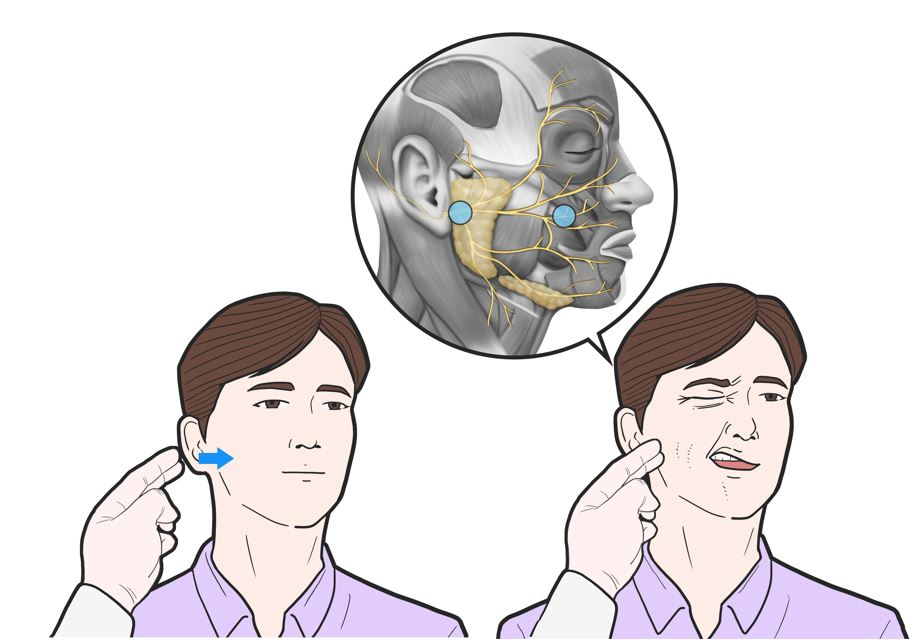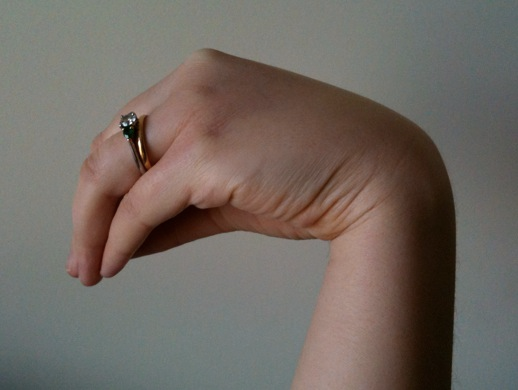Chvostek sign is a medical condition that results in the twitching of ipsilateral facial muscles. It is caused by a deficiency of calcium in the blood and can be a symptom of hypoparathyroidism. The clinical significance, etiology, proposed mechanisms, and controversies regarding this eponymous clinical sign will be reviewed next.
Introduction
Franz Chvostek (May 21, 1835 – November 16, 1884) was a 19th-century Austrian physician who made significant contributions to the field of neurology. One of his most important discoveries was the Chvostek sign (i.e, facial nerve tetany), a feature of certain neurological disorders.
This physical examination sign is characterized by muscle twitching in response to tapping on the facial nerve. It occurs in disorders such as tetany, which is caused by a deficiency of calcium or other minerals. Chvostek’s discovery helped to improve the diagnosis and treatment of these disorders.
In addition to his work on this sign, Chvostek also made essential contributions to our understanding of cerebral palsy and epilepsy. His work laid the foundation for much of our modern knowledge of these disorders. Dr. Franz Chvostek first reported a case of motor neuron excitability classically elicited in latent tetany in 1870 [1].
Calcium and parathyroid hormone
Calcium is the most abundant mineral in the human body, with about 99% of it being found in bone. It is essential in several biochemical processes, including hormone secretion, bone mineralization, maintenance of cell integrity, coagulation of blood, neuromuscular contraction, and signal transduction.
Several hormones with regulatory effects on the parathyroid gland, intestine, bone, and kidneys ensure the maintenance of serum calcium within a narrow physiologic range.
Etiology of Chvostek Sign
Hypocalcemia: When calcium levels are low, the nerves are less able to send signals effectively, leading to muscle twitching or cramping. In severe cases, low blood calcium levels can cause seizures.
Metabolic alkalosis: Metabolic alkalosis causes an increase in circulating bicarbonate which binds ionized calcium. In addition, the binding of circulating albumin with calcium increases in the setting of alkalosis. Both reasons account for the low level of ionized or free calcium in the setting of alkalosis
Hyperventilation: Hyperventilation results in decreased carbon dioxide levels in the blood. Calcium is critical for many processes in the body, including muscle contraction and nerve conduction.
When carbon dioxide levels drop, it causes a shift in the equilibrium between carbonic acid and bicarbonate. This increases the amount of bicarbonate in the blood, which binds with calcium, making it unavailable for these crucial functions.
Hypomagnesemia : Magnesium is a mineral that is essential for many bodily functions, including nerve conduction. Studies have shown that magnesium deficiency can cause changes in nerve conduction, which can lead to muscle weakness and tremors (nerve excitability)
Proton pump inhibitors (PPIs) : PPIs have been associated with hypocalcemia. Possible mechanisms include impaired intestinal calcium absorption and hypomagnesemia-induced hypoparathyroidism.
Hypovitaminosis D : A low calcium level may occur in the setting of hypovitaminosis D.
Clinical Features
Tapping of the facial nerve immediately below and in front of the ear (root of the facial nerve) results in twitching of the corner of the mouth, the nostril and the orbicularis oculi in latent tetany. Similar twitching can be elicited by percussion below the zygomatic arch at the midpoint between the corner of the mouth and the ear. Only simultaneous twitching of all three muscles after tapping the root of the facial nerve can be interpreted as a sign of tetany (Chvostek I).
Twitching which can be released only in the region below the zygomatic arch or in the region of the cheek, or which appears only in two muscle groups after tapping the root of the facial nerve (defined classically as Chvostek II and III) can also arise in healthy subjects. Thus, such twitching is only of slight diagnostic value and must be used with caution. Occasionally, however, when the diagnosis of tetany has been confirmed, it can be useful in the assessment of the course of the illness, e.g., for estimating a therapeutic measure.
Occasionally, Chvostek’s facial phenomenon cannot be released in confirmed cases of hypoparathyroidism with greatly reduced serum calcium levels.

Mechanism of Chvostek sign
1. Extracellular calcium is critical in maintaining the permeability of sodium channels on neuronal cells. Hypocalcemia increases the influx of sodium and promotes neuronal excitability by lowering the action potential threshold. This state of neuromuscular excitability is further aggravated by mechanical percussion of the peripheral part of the facial nerve (positive Chvostek’s sign) [2].
2. Mild hypoxemia due to ischemia within the soft tissues distal to the inflated sphygmomanometer cuff causes Trousseaus sign (carpopedal spasm) [2].
Is Chvostek sign a reproducible sign?
A positive Chvostek’s sign has poor specificity and sensitivity for hypocalcemia [3]. A systematic review reported the sensitivity of Chvostek’s sign as ranging from 0% to 100 % with a specificity of 78.8% to 100% among patients with hypocalcemia [1]. The question of whether it is a useful clinical sign is debatable.
Chvostek sign versus Trousseau’s sign
Trousseau’s sign usually manifests as limb spasms, best elicited by placing the blood pressure cuff of a sphygmomanometer over the upper arm and inflating it to at least 20mmHg above the systolic blood pressure [3–5]. It is both sensitive and specific for clinically significant hypocalcemia [3].

A study reported the prevalence of Trousseau’s sign as being up to 94% in patients with biochemically confirmed hypocalcemia, compared with 1% in patients with normal serum calcium [2].
Treatment
Treatment for refractory hypocalcemia typically involves an IV infusion of calcium gluconate or calcium chloride. In severe cases, intubation may be necessary to protect the airway.
For patients with transient postoperative hypocalcemia, calcium supplementation with calcium carbonate may be required. Predicting transient hypocalcemia in patients who have undergone thyroid surgery is good clinical practice. Indeed, a momentary decline in serum calcium levels due to transient postoperative hypoparathyroidism is not an infrequent finding.
References
1. Hujoel IA. The association between serum calcium levels and Chvostek sign. Neurol Clin Pract. 2016;6(4):321-328.
2. Cooper MS, Gittoes NJL. Diagnosis and management of hypocalcaemia. BMJ. 2008;336(7656):1298-1302.
3. Jesus JE, Landry A. Images in clinical medicine. Chvostek’s and Trousseau’s signs. N Engl J Med. 2012;367(11):e15.
4. Marcucci G, Cianferotti L, Brandi ML. Clinical presentation and management of hypoparathyroidism. Best Pract Res Clin Endocrinol Metab. Published online September 28, 2018. doi:10.1016/j.beem.2018.09.007
5. Chhabra P, Rana SS, Sharma V, Sharma R, Bhasin DK. Hypocalcemic tetany: a simple bedside marker of poor outcome in acute pancreatitis. Ann Gastroenterol Q Publ Hell Soc Gastroenterol. 2016;29(2):214-220.
Image(s) Courtesy
Endocrine Pathophysiology : A concise guide to the physical exam
MyEndoConsult
Kindly Let Us Know If This Was helpful? Thank You!


